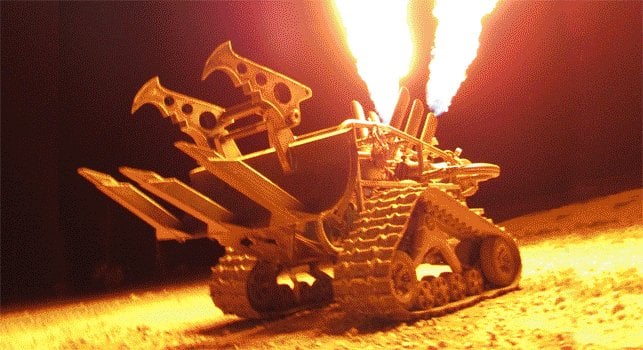When law enforcement agencies and the military need a robot mechanical platform compact enough to be carried around in the field but with enough power to get the job done, they turn to The Machine Lab.
Zack Bieber founded the company in 2001 when he realized researchers, students, hobbyists, and professionals building robots didn’t have easy access to an affordable design that helped them bypass the mobility factor of building a robot. Since then, word has caught on about his team’s capabilities, and they have built 1000s of Explosive Ordnance Disposal (EOD)-type robots, featuring video surveillance equipment for the U.S. Navy and Army. These tactical designs have also served alongside law enforcement and SWAT teams.
“Our robots are saving lives every day,” Bieber said proudly. These robots also contribute to research teams, such as when The Machine Labe designed a camera robot for an Antarctic mission to photograph penguins, and when the University of Calgary in Alberta Canada needed a custom research robot for its AR2S robotics laboratory.
The Calgary research group specializes in creating “autonomous intelligent robotic systems that can work together in teams, self-adapt and perform a great number of tasks,” its website explained.
If The Machine Lab name sounds familiar outside of these areas, it’s because their customers have also used the bases for building robots featured on ABC’s BattleBots, including Bieber’s own design– Razorback.
To keep costs and turnaround time down, Bieber and his employees manufacture the robot parts in-house on CNC machines – including a Tormach 15L Slant-PRO Lathe and a PCNC 770.
“They have been invaluable to our operation. The small size, capability, quality, and cost of these machines gives them great value,” applauded Bieber. “We use the machine primarily for prototyping, small quantity production, and 2nd operation machining.” Before purchasing these machines, the nimble qualities that made The Machine Lab a successful business were constrained by their industry partners.
“Typically it would take one of our vendors two to four weeks to run these parts when we can run them in two to four days. With Tormach’s automatic tool changers, coolant systems, and repeatability, we have no problem letting the machines run all day long to help us fill in the parts inventory gaps.”
“The other great thing about having the Tormach mill and lathe is that they allow us to machine parts for prototyping in a flash. We are a small company and one of our attributes is that we can move fast. Our turnaround time from concept to functional prototype is very quick and it gives us a tremendous advantage when competing with larger companies. The Tormach mill and lathe are easy to operate and we can quickly kick out precision parts that allow us to validate proof of concept. They help us keep our forward momentum on projects that are time critical.” Bieber has other machines in his shop too, but said the Tormachs’ higher spindle speeds (10,000 RPM) and automatic cool setters are important features.
“The Tormach machines are simple and straight forward, which make it easy to train new operators,” Bieber observed. “The small footprints of the machines make them very convenient to install and operate where space is at a premium.
The ability to operate at 115 AC makes it easy to set up anywhere in the shop without needing an electrician. All of these features, along with an amazing price tag, are the reasons why I chose to buy Tormach machines, and I have been very happy with their performance.”


